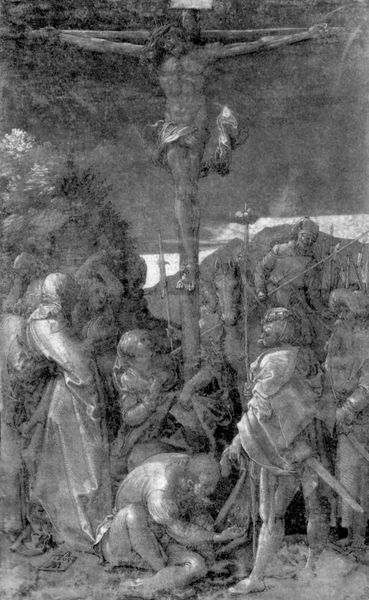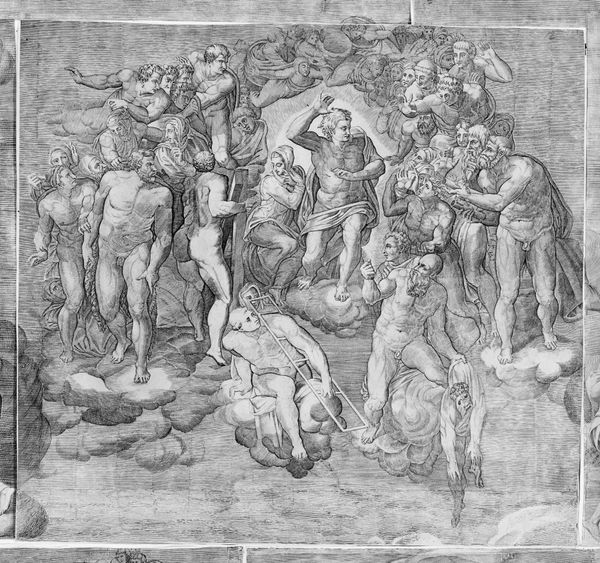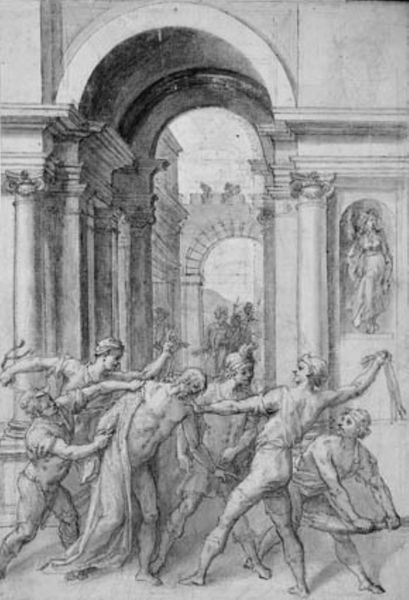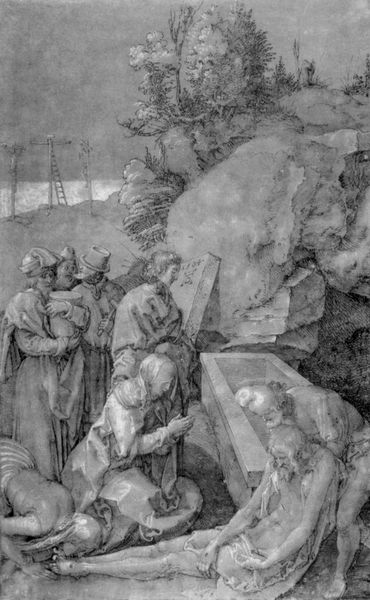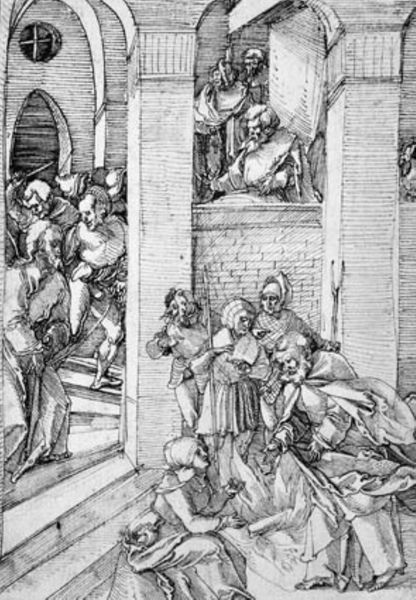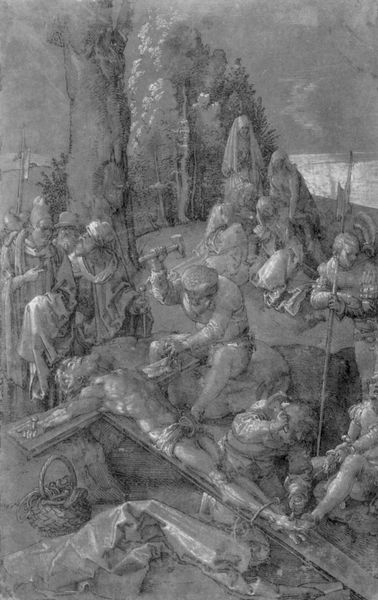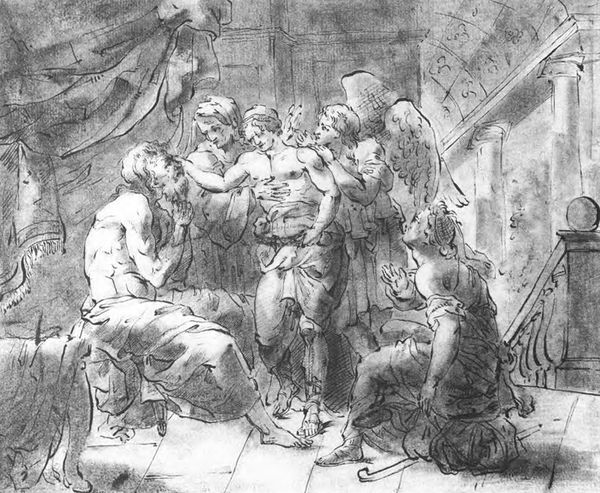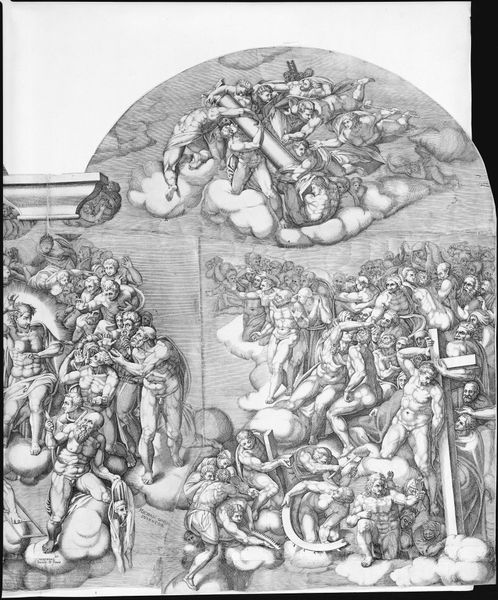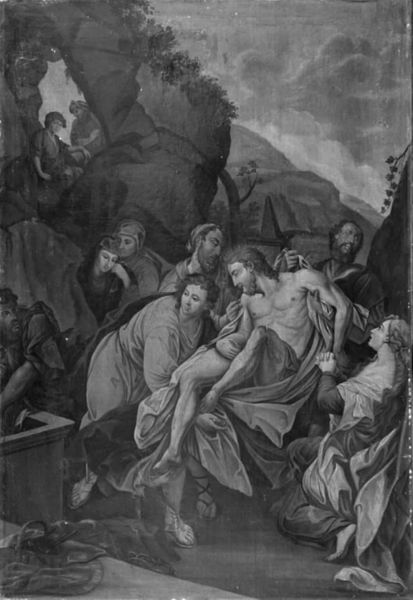
drawing, charcoal
#
drawing
#
charcoal drawing
#
figuration
#
christianity
#
charcoal
#
history-painting
#
northern-renaissance
#
charcoal
Copyright: Public domain
Editor: Here we have Albrecht Dürer's "Flagellation," a charcoal drawing from 1504, currently held at the Albertina in Vienna. It’s…brutal, wouldn’t you say? The composition feels incredibly dense and the figures are so intensely engaged in this act of violence. What's your take on this drawing? Curator: It is indeed brutal, and intentionally so. Dürer’s work must be situated within the religious and social climate of the early 16th century. Think of the Reformation brewing, anxieties about salvation, and the visual culture of suffering. How do you see this drawing functioning within that context? Editor: As a means of reinforcing faith, maybe? By vividly depicting Christ's suffering, viewers are reminded of his sacrifice and their need for redemption? Curator: Exactly. But it's not just about simple piety. Consider Dürer’s choices. The architectural setting, reminiscent of classical forms, elevates the event, transforming it into a kind of historical drama, right? Does this architectural detail resonate with anything specific in your understanding of art from this era? Editor: Well, I do notice a lot of Renaissance art tries to reference classical forms as part of a need to look more legitimate to elites during this period, yes. The flagellation, by contrast, it puts this moment into high art history. So is it commentary? Like is Dürer questioning authority? Curator: It's difficult to say definitively that he's critiquing the Church overtly. Dürer, like many artists, was often reliant on patronage and operated within a complex system. The drawing likely served multiple purposes - religious devotion, artistic exploration of form and perspective, and demonstration of skill, but one could suppose he questioned what it represented. The beauty almost serves as commentary on the cruelty of the event portrayed. Editor: That’s fascinating. I hadn't considered all those layers—devotion, artistry, and perhaps a hint of unease with authority, all intertwined. It really puts the artwork in a new light. Thanks for sharing that with me. Curator: It's crucial to acknowledge those complexities, isn’t it? By considering the various influences on an artist, you get a richer understanding of their place within history.
Comments
No comments
Be the first to comment and join the conversation on the ultimate creative platform.
